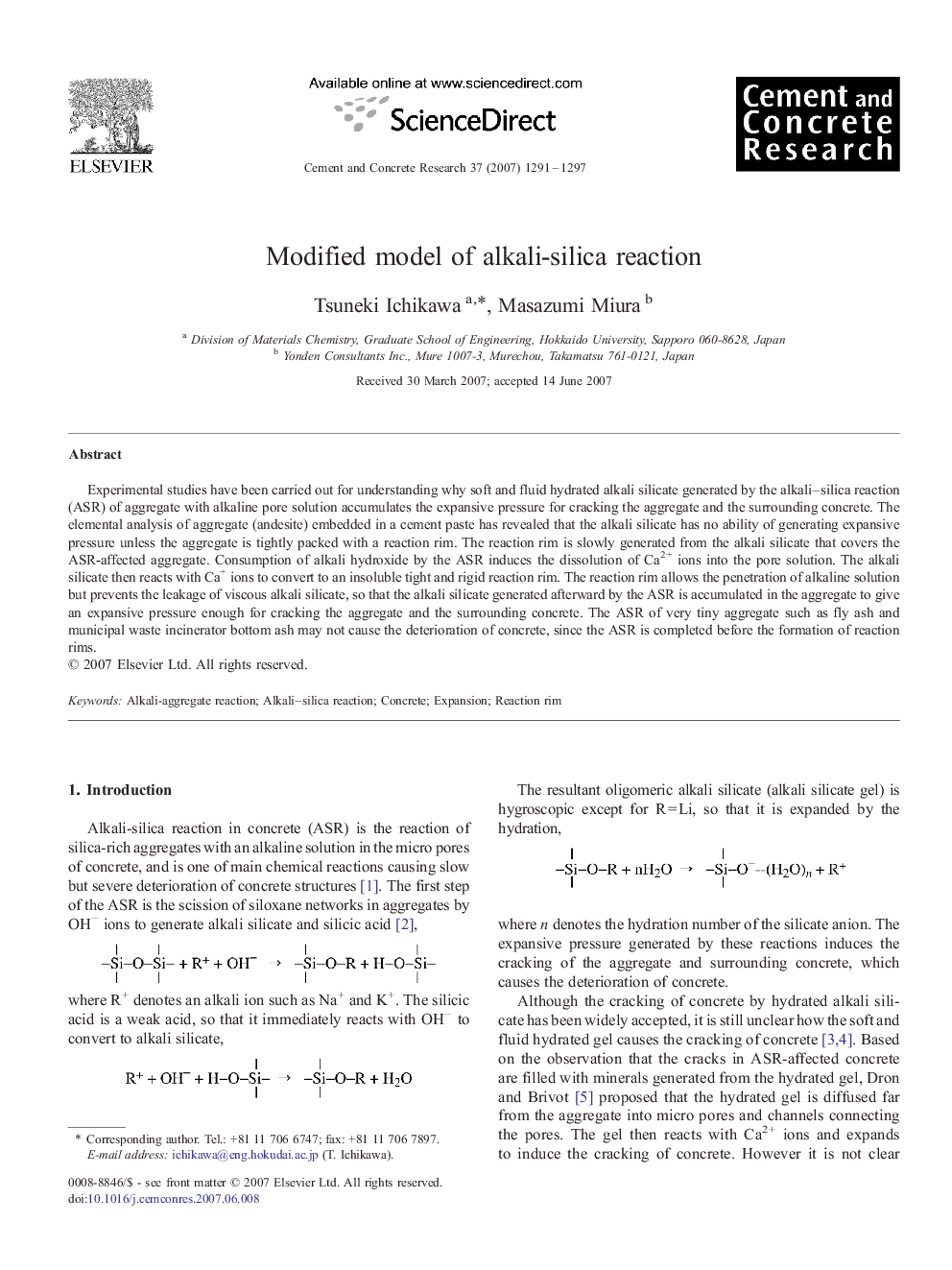| Article ID | Journal | Published Year | Pages | File Type |
|---|---|---|---|---|
| 1457871 | Cement and Concrete Research | 2007 | 7 Pages |
Experimental studies have been carried out for understanding why soft and fluid hydrated alkali silicate generated by the alkali–silica reaction (ASR) of aggregate with alkaline pore solution accumulates the expansive pressure for cracking the aggregate and the surrounding concrete. The elemental analysis of aggregate (andesite) embedded in a cement paste has revealed that the alkali silicate has no ability of generating expansive pressure unless the aggregate is tightly packed with a reaction rim. The reaction rim is slowly generated from the alkali silicate that covers the ASR-affected aggregate. Consumption of alkali hydroxide by the ASR induces the dissolution of Ca2+ ions into the pore solution. The alkali silicate then reacts with Ca+ ions to convert to an insoluble tight and rigid reaction rim. The reaction rim allows the penetration of alkaline solution but prevents the leakage of viscous alkali silicate, so that the alkali silicate generated afterward by the ASR is accumulated in the aggregate to give an expansive pressure enough for cracking the aggregate and the surrounding concrete. The ASR of very tiny aggregate such as fly ash and municipal waste incinerator bottom ash may not cause the deterioration of concrete, since the ASR is completed before the formation of reaction rims.
